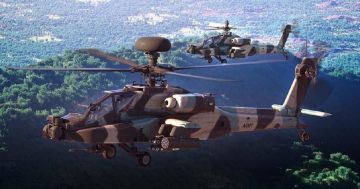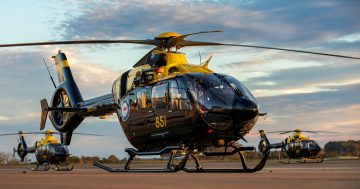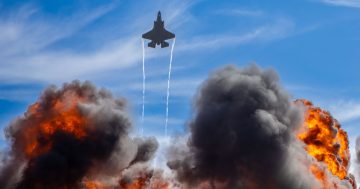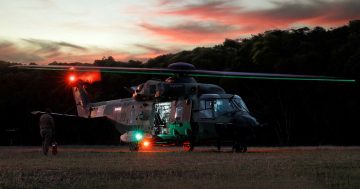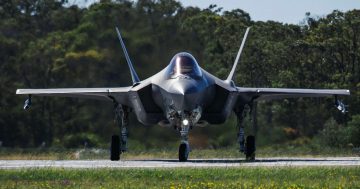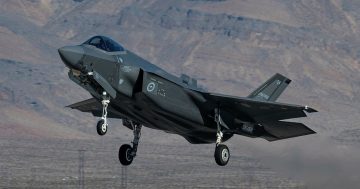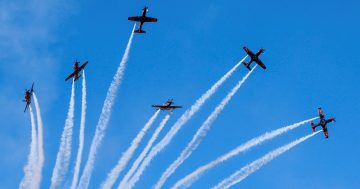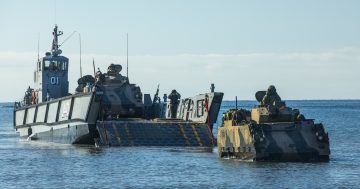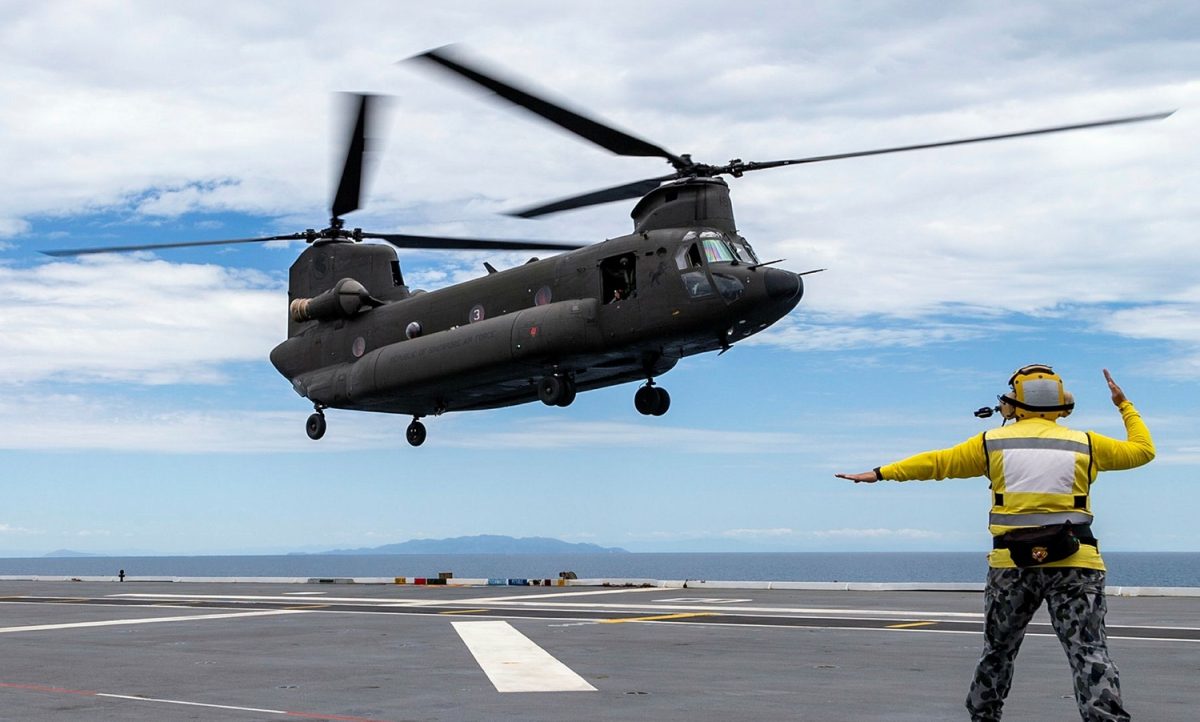
An RSAF CH-47SD Chinook lands aboard one of the Royal Australian Navy’s Canberra-class LHDs. Photo: ADF.
Singapore is one of the world’s smallest countries, an island wedged tightly at the bottom of the Malay Peninsula in between Malaysia and Indonesia, and alongside one of the world’s most used and most contentious waterways.
The strategic pressure on Singapore to not only retain but be able to assert its independence is great. Therefore, it has built one of the region’s best-trained and best-equipped militaries, one that is more than capable of warding off all but the largest threats.
The Republic of Singapore Air Force (RSAF) operates some of the world’s best combat and most sophisticated reconnaissance and support aircraft. It has four airbases on the tiny island – at Changi, Paya Labar, Sembawang and Tengah, and can also access the Seletar business and general aviation airport’s runways.
And if any of those airbases and their runways are damaged in an attack, some of Singapore’s motorways or ”expressways” can be used as runways, and some bases even have cleverly hidden connecting taxiways to the expressways.
But despite this built-in resilience, when you’re a tiny island state with less than 800 square kilometres of airspace to work in – about one-third the size of the ACT – and you share that airspace with one of the world’s busiest airports, there just isn’t enough room to accommodate everyone.
Therefore, Singapore has found it necessary to deploy many of its training squadrons overseas to friendly countries with larger blocks of available airspace and ranges to train its students in basic, advanced and air combat training.
The US hosts the largest RSAF contingent, with 14 Lockheed Martin F-16 fighters based at Luke AFB in Phoenix, Arizona, 10 Boeing F-15SG fighters based at Mountain Home AFB in Idaho, and eight AH-64E Apache attack helicopters based at Silverbell Army Heliport near Tucson in Arizona.
In Europe, an RSAF detachment of 12 Alenia M346 Master advanced jet trainers is based at Cazaux Air Base near the French city of Bordeaux.
Australia obviously has an abundance of airspace and training ranges, so the RSAF has also held a presence in Australia for several decades, and its air combat, air-to-air refuelling and reconnaissance aircraft are also regular attendees at major multilateral and bilateral exercises in Australia, such as Pitch Black and Talisman Sabre.
October 2023 saw two key milestone anniversaries for the Australian detachments – 30 years since the establishment of the RSAF’s No 130 Squadron at RAAF Base Pearce near Perth, and the 25th anniversary of the deployment of an RSAF helicopter detachment to Swartz Barracks at the Oakey Army Aviation Training Centre near Toowoomba in Queensland.





Initially flying Eurocopter AS532UL Cougar helicopters with No 126 Squadron at Oakey, in 2018 the helicopter detachment switched to No 127 Squadron flying eight Boeing CH-47D/SDs and later the CH-47F Chinooks.
The ‘integration’ of the RSAF unit at Oakey was amply demonstrated when three RSAF Chinooks were deployed alongside Australian Army Chinooks as part of a Multinational Task Group in support of the 2021–2022 eastern Australia floods around the northern NSW cities of Lismore, Murwillumbah and Ballina.
The 25th-anniversary celebration at Oakey was attended by the RSAF Chief of Air Force Major General Kelvin Khong and the Republic of Singapore High Commissioner to Australia Anil Kumar, as well as the Chief of the Australian Army Lieutenant General Simon Stuart and the Commander of Army Aviation Command Major General Stephen Jobson, while an RSAF Chinook was painted with a commemorative tail design.
Over at Pearce, No 130 Squadron flies 12 Pilatus PC-21 trainers to conduct its Basic Wings Course alongside the RAAF’s similarly equipped No 2 Flying Training School (2FTS). The basing arrangement was established in 1993 and was extended by a further 25 years in 2017.
The 30th anniversary of the detachment was celebrated on 13 October, with the chiefs of both air forces attending, a joint flypast of RSAF and RAAF PC-21s, and a commemorative RSAF PC-21 tail design unveiled.












